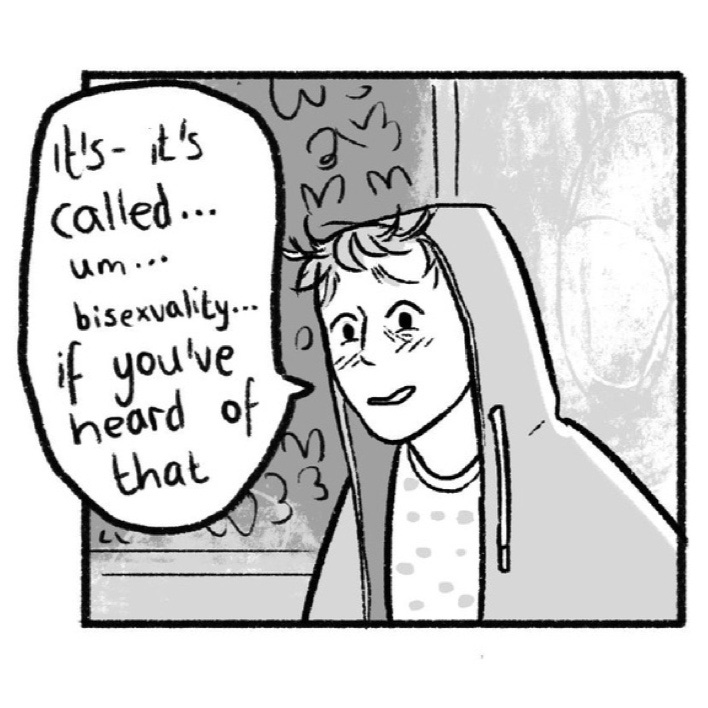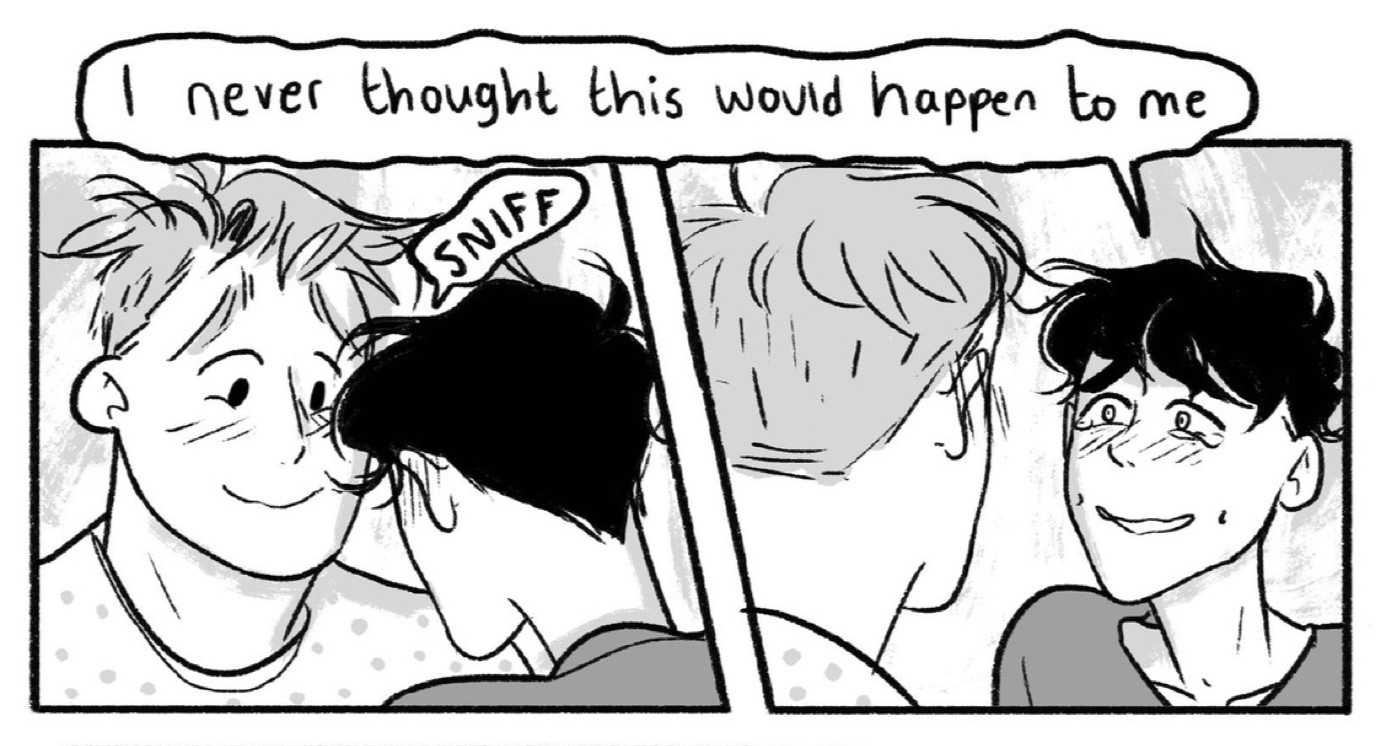Hello readers, while I continue to struggle with my sequel (I’ve had another new idea for approach which I might write about next time), this time I wanted to post a book review which is specially relevant to this column.
Over two years ago, near the start of Sequel Country, I wrote something like this:
I have never read a commercially published novel set in modern Britain (since 1967, say) with a bisexual male protagonist who has same-sex relationships and doesn’t have to die or be redeemed.
Readers sent me some suggestions, but none of them met all of the criteria above, especially the one about bi male characters not being evil or damaged. Later that year, I wrote a column titled bi books which focussed on the lack of positive bi characters in contemporary novels, and examined why it might be difficult to write bisexuality. This is a subject close to my heart: I wrote Parallel Lines precisely because I want there to be a novel with a bi male character who has same-sex relationships; in other words, someone like me.
Well… now, I have read a commercially published novel set in modern Britain with a bi male protagonist who has a same-sex relationship and isn’t evil or broken - though it turned out to be in the Young Adult (YA) genre, which I hadn’t really thought about since I don’t read it myself and it didn’t really exist when I was that age.
I had heard of Heartstopper when it was on TV, but I don’t watch TV so I didn’t pay attention. But late last year, I discovered that the TV show is an adaptation of a book, a graphic novel in fact; so I read it, and here we are. It is actually a sequence of graphic novels (the sixth and final book is not yet published) which tell the love story between teenagers Charlie, who is gay, and Nick, who is bisexual. It was deeply moving for me to read. I’ve been waiting all my life to read a book with a character like me in it. I never guessed it would be a YA book.
Heartstopper had an unusual genesis: Charlie and Nick are secondary characters in Alice Oseman’s debut novel Solitaire (2014), and she wanted to develop their story but couldn’t see how to make the story she had in mind work in novel format. So, after publishing a couple of novellas about them in 2015, she started publishing Heartstopper as a free webcomic in 2016 (it is still free to read, a few new pages every 10 days, on her Tumblr). Then she crowdfunded publishing the first volume and it took off.
The author must have thought about the same challenges that I tackled in Parallel Lines, but solves them through the medium of YA. One, which I discussed in “bi books”, is how to show bisexuality when it’s primarily an internal thing during a monogamous relationship. In Parallel Lines I show Roy coming to terms with the idea of being bi, and I show it through serial monogamy, but in Heartstopper Nick and Charlie are monogamous and it’s shown through Nick coming to terms with being bi, which is more emotional for Nick (Roy is older and has a scientific way of tackling his problems). The word “bisexual” appears right at the centre of page 320, and this moment is a turning-point in the storytelling, because until this point the story is told almost entirely from Charlie’s point of view; but from here on (just after their first kiss), the PoV alternates for longer periods between the two of them. His dealing with his bisexuality is beautifully and age-appropriately handled: on p.193 he is shown googling “i like girls but now i like a boy????”.
The other issue, that of how to tell a character-focussed relationship story without external events providing drama, we’ve solved in different ways. I made Roy and Ashley’s story about their personal growth across a whole decade, the conflicts and setbacks coming from within themselves. Alice Oseman tells a simpler story, without any significant conflicts between the protagonists, by telling the story in highly detailed episodes over two years. It’s a happy, feelgood story, but the graphic novel format suits that, and it still deals very sensitively with topics including anorexia and mental health, and a degree of homophobia and biphobia, and perhaps something else in the unfolding last chapter. And yet other problems are completely ignored: it’s an almost absurdly multicultural school, but there is no hint of racism, nor does the trans character appear to encounter transphobia. This is fine, given that it’s Nick and Charlie’s story, not their friends’, and it gives the story a utopic feel.
I love the fact that Charlie is comfortable with being gay by the time of the story, but Nick has to come to terms with his sexuality at a slightly later age: I made the same choice in PL, maybe for the same reason, to show that bisexuality is inherently more complex, but also can feel natural to a character who is neither fundamentally damaged, nor greedy and self-absorbed. I love lots of things about Heartstopper, actually. One of my favourite things is the drawing style, and the way it frequently turns cartoonish in the earlier chapters. It’s funny and perfectly suits the story. The author has almost completely stopped doing this in the later volumes, perhaps because they have more serious themes and the characters are older (by the end, all the characters are in what we used to call “Sixth Form”, which is now apparently awkwardly called “Years 12 And 13”), but I like the way the characters’ faces and hairstyles are visibily more adult-looking. I like the very subtle way the author includes class and cultural differences between the characters. I love the way Nick is shown in a wholly positive way, generous, caring, loyal and never ever mean to anyone (just like me, obviously). I feel like I’ve waited my whole life to read a book with a character like Nick Nelson, and it was glorious to binge on the graphic novels over Christmas.
But it’s a YA graphic novel, so one thing that is missing, is sex in all its messy glory. Nick and Charlie’s first time is no more than hinted at with a bare shoulder - there isn’t even rear nudity below the shoulderblades, let alone frontal. In fact, all the characters are drawn in a very androgynous style, clothes never hint at bulges and even girls in bikinis have no more than the faintest hint of curves. I’m sure this is a very deliberate choice to make the material age-appropriate, but what I really had in mind was a shown-not-told adult novel. So let me amend my statement of desire:
I have never read a commercially published adult novel set in modern Britain with a bisexual male protagonist who has a same-sex relationship and doesn’t have to die or be redeemed.
This is why I write the stories I do: why I still want to publish Parallel Lines and write its sequel. More on those fronts next time.






I admit it, this isn't a proper book review. I didn't critique it, contextualise it or balance the good points with my (few) reservations about it. It's more a puff-piece than a review. I just love Heartstopper and wanted to share.